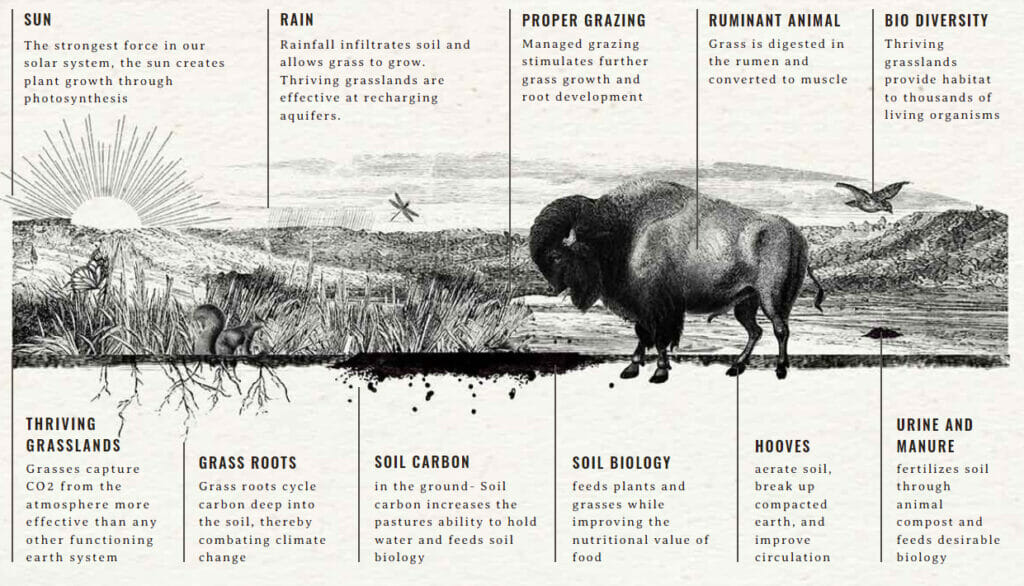The following report is from AgFunder News:
High-income nations that shift towards plant-based eating will benefit from a “double climate dividend” of reduced greenhouse gas (GHG) emissions and enhanced carbon sequestration, according to the findings of a recent study published in Nature.
A team of researchers from Leiden University, the University of Wisconsin-Madison, and Vienna University of Economics and Business argue that the world’s 54 wealthiest countries could cut their ag-related GHG emissions by as much as two-thirds if their populations switch to a model plant-based diet.
The team said it chose to focus on high-income economies because animal-derived products are responsible for around 70% of agrifood system-related GHG emissions in these countries, as opposed to 22% in low and middle-income economies – suggesting that plant-based eating can have a significant global impact in the former group alone.
Planetary Health Diet
Researchers simulated the adoption of the EAT-Lancet Planetary Health Diet — in which non-animal, plant-derived foods make up around 90% of an individual’s total nutrition — across the 54 countries. Their modeling indicated that this could lead to a 61% reduction in annual agricultural emissions for these countries.
Moreover, the researchers claim that if the land “spared” from agricultural use as a result of this dietary change “were restored to its antecedent natural vegetation,” the countries would free up an area a little larger than the entire EU.
Depending on subsequent use, this land could collectively sequester around 98.3 billion tons of carbon equivalent by the end of this century – offsetting around 14 years’ worth of global agricultural emissions at current levels. This alone “could potentially fulfil high-income nations’ future sum of carbon dioxide removal [CDR] obligations under the principle of equal per capita CDR responsibilities,” the researchers claim.
Around half the projected total carbon offset would be accounted for by four countries — Australia, France, Germany, and the US — all of which have particularly high levels of meat and dairy production and consumption.
It’s really about having a joined-up picture of food policy and land policy and climate policy at the same time, and fundamentally re-aligning subsidies in order to harness this.
Paul Behrens, an environmental scientist at Leiden University and a co-author of the paper, told the BBC.
Food Accounts For A Third Of All Emissions
Food systems — from land use and production through the supply chain to consumption — are responsible for almost a third of the world’s GHG emissions; and close to half of that total comes from crop and livestock farming, according to the UN Food & Agriculture Organization.
Research suggests that well over half of agricultural emissions originate from livestock production, with as much as a quarter of all food production emissions coming from the beef industry.
Meanwhile, half the world’s habitable land is used for agriculture; and 77% of that is taken up by meat and dairy farming.
We know that shifting diets can save a huge amount of emissions [by] avoiding emissions from animal-based agriculture, but we can also save large amounts of land which can be used to sequester carbon from the atmosphere.
You could roughly double the emissions that you save by following a plant-based diet if the land was allowed to re-wild or re-forest.
Behrens said.
What About Regen Ag?
However, some argue that alternate forms of agricultural land use involving livestock — such as agroforestry and regenerative grazing — may also encourage enhanced carbon sequestration when compared to mainstream methods.
One 2020 Royal Society-published study of Australian and US cattle operations concluded that “regenerative ranching” — a mix of “managed grazing” practices with “holistic decision-making” at larger scales — “is a low-cost, low-tech natural climate solution that has potential to contribute to climate change mitigation by reducing GHG emissions associated with conventional agriculture and enhancing natural carbon sinks through grazing practices thought to contribute to soil carbon sequestration.”
Another 2020 paper, published by Frontiers, found that multi-species pasture rotations can sequester enough carbon to net a 66% reduction in GHG emissions when compared to conventional, large-scale beef farming.

However, it also found that such practices typically require two-and-a-half times the land of commodity-focused conventional beef production.
AUTHOR COMMENTARY
Regular readers know that a lot of what was said here is just typical propaganda to promote the masses getting off of eating meats – something the King James Bible (unlike the other so-called “translations” change/remove) prophesized would happen.
[1] Now the Spirit speaketh expressly, that in the latter times some shall depart from the faith, giving heed to seducing spirits, and doctrines of devils; [2] Speaking lies in hypocrisy; having their conscience seared with a hot iron; [3] Forbidding to marry, and commanding to abstain from meats, which God hath created to be received with thanksgiving of them which believe and know the truth. [4] For every creature of God is good, and nothing to be refused, if it be received with thanksgiving: [5] For it is sanctified by the word of God and prayer.1 Timothy 4:1-5
However, as noted in this report, though downplayed, regenerative agriculture in a livestock setting sequesters way more carbon, than compared to conventional feedlot/grain-fed beef and other livestock, and plant-based diets. This method also increase nutrient density of the meats because, as we all learned in Kindergarten, plants NEED carbon as a source of energy and then converted into oxygen and nutrients for us and the animals.

Furthermore, the cattle population in the United States has been rapidly decreasing since the 1970’s – something the University of Kentucky recently reported last week. So how can we blame cattle for so much carbon being emitted.

In short, vegan diets, along with so many of these climate initiatives are horrible you and the environment. The only reason why the prohibition of meats are pushed is because they are a necessity for your health, and vegan diets will cause you to rot away.
[7] Who goeth a warfare any time at his own charges? who planteth a vineyard, and eateth not of the fruit thereof? or who feedeth a flock, and eateth not of the milk of the flock? [8] Say I these things as a man? or saith not the law the same also? [9] For it is written in the law of Moses, Thou shalt not muzzle the mouth of the ox that treadeth out the corn. Doth God take care for oxen? [10] Or saith he it altogether for our sakes? For our sakes, no doubt, this is written: that he that ploweth should plow in hope; and that he that thresheth in hope should be partaker of his hope. (1 Corinthians 9:7-10).
The WinePress needs your support! If God has laid it on your heart to want to contribute, please prayerfully consider donating to this ministry. If you cannot gift a monetary donation, then please donate your fervent prayers to keep this ministry going! Thank you and may God bless you.








Stupid, consequential judgment, & prophesied. Just amazing. Really should read ‘Oh boy, bigger profit & more control for the managing elite with their Frankenfoods & deathcare….and kickbacks for the cronies. Antichrist political organizing, & science falsely so-called, sorcery & psych-sorcery at its finest. (Oxymoron and sarcasm!) Proverbs, especially 1-8 are good antidotes.